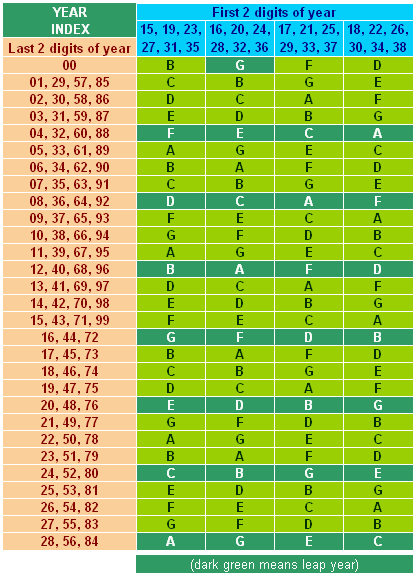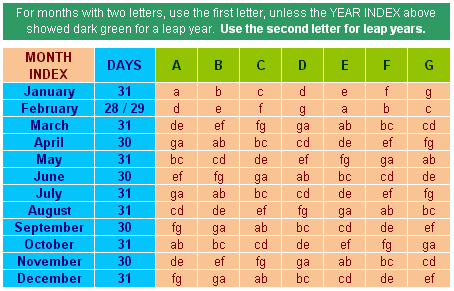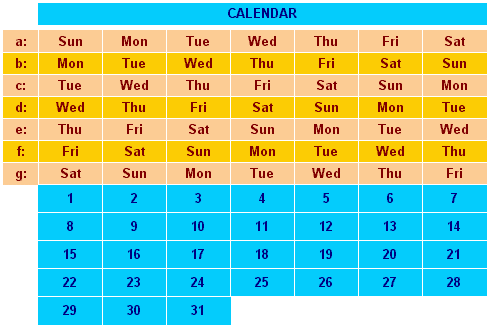
| Home > Perpetual Calendar |
Here is a one page perpetual calendar showing all years from 1583 to 3899 AD.
(This requires Adobe Acrobat Reader)
See above for a simple one-page calendar that's ideal for printing. The following is a different presentation optimised for web browsers.
This perpetual Gregorian calendar shows days of the week for any month. It applies from the start of the Gregorian Calendar to the year 3899! You might be interested in some calendar history and facts, and also the Easter page for when and why the Gregorian calendar was introduced in different regions.
There are 3 tables below used to find the calendar for any month of any year:
Find the column with first 2 digits of the year (eg the 19 in 1997), and the row with the last 2 digits of the year (eg the 97 in 1997). Then find the year letter A to G where that column and row intersect (eg 1997 has a year letter of D).

Note that leap years are shaded dark green. For leap years, you need to use the second letter in the Month Index below.
Find the column with your year letter, and the row with the month you want. Then find the month letter a to g where that column and row intersect. For example, 1997 gave us D in the Year Index. Using the Month Index, column D and February have a month letter of g.

Using the month letter a to g, use the calendar below to see the days of the week for that month. For example, using the weekdays for g, you can see that February 26, 1997 is a Wednesday.
